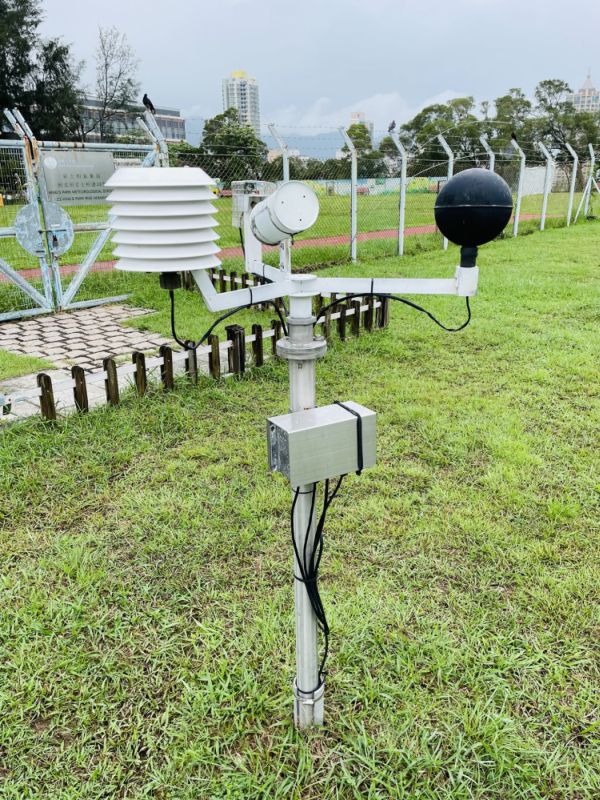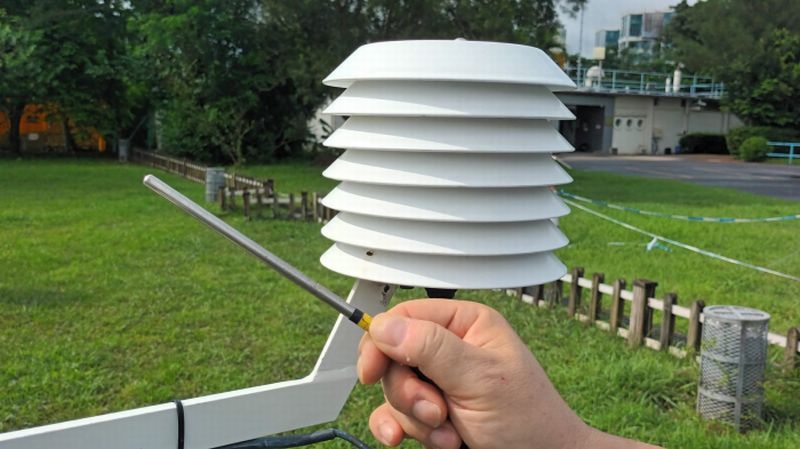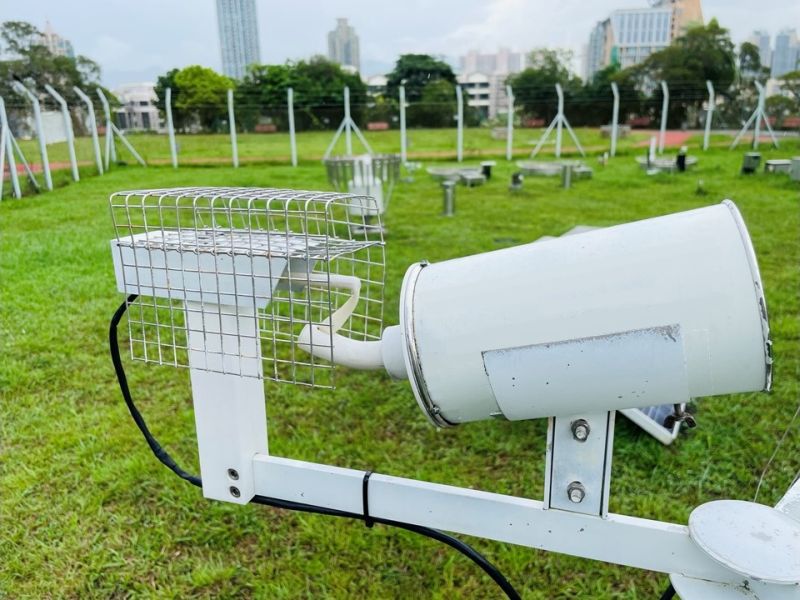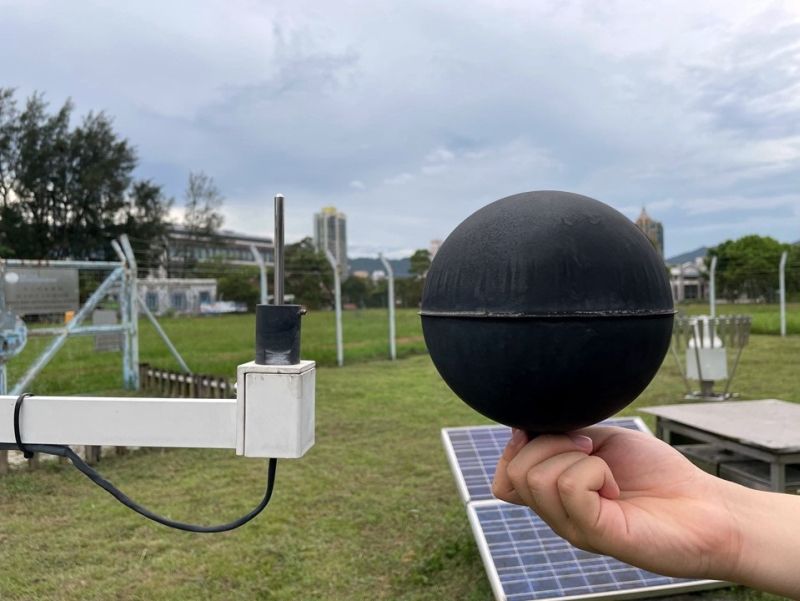What does Heat Stress Monitoring System Measure?
What does Heat Stress Monitoring System Measure?
LAU Po-wing Stephen, LEE Tsz-ching and WONG Tsz-cheuk
July 2023
Now it is summer, apart from air temperature, relative humidity and other weather information provided by the Observatory, we may also notice the Hong Kong Heat Index (HKHI). Taking a closer look, you would realize that air temperatures and HKHI have similar trends, but their values are not the same. Using the case on 14 September 2022 as an example, King’s Park recorded a daily maximum temperature of 34.5 degrees, while the HKHI, also measured at King’s Park, was only 27.5. Why would there be such a large difference in values for two indicators of hot weather? Before solving the puzzle, let us first understand the “Heat Stress Monitoring System” measuring HKHI.
The Observatory’s in-house developed "Heat Stress Monitoring System" registered a patent in Hong Kong as early as 2009. Initially, the Observatory developed this system to support the Hong Kong Olympic and Paralympic Equestrian Events in 2008. It provided an objective reference indicator of the stress level on horses under high temperatures, allowing concerned parties to take additional measures to prevent the body temperature of the horses from getting too high. This system consists of three thermometers: dry-bulb thermometer, natural wet-bulb thermometer, and globe thermometer.
The dry-bulb thermometer is a platinum resistance thermometer housed in a solar radiation shield. The thermometer adopts a platinum wire component with its resistance varying with temperatures. Air temperatures can be known according to the resistance values. The principle of solar radiation shield is the same as that of the Stevenson screen, allowing good ventilation and avoiding thermometer being affected by direct sunshine and rainfall.
The natural wet-bulb thermometer also measures temperature by a platinum resistance thermometer. The major difference from the dry-bulb thermometer is that the natural wet-bulb thermometer is covered by a moist muslin and exposed outdoors, allowing the temperature measurements to be influenced by air temperature, humidity, sunlight, and wind. When the water on the moist muslin evaporates, it draws heat from both the muslin and the thermometer, causing the wet-bulb temperature to be lower than the dry-bulb temperature. If the weather is dry, or under blazing sunshine or strong winds, water evaporates more easily. In those days the difference between the two temperatures would be more obvious. Hence the natural wet-bulb temperature can reflect the sweating condition and cooling efficiency of horses or humans in an outdoor environment.
The design of the globe thermometer is to enclose a platinum resistance thermometer in a hollow and dull black copper ball. When sunlight shines on the ball surface, most heat radiation would be absorbed and transferred into heat energy. Copper, with a high conductivity of heat, can absorb heat or cool down rapidly. Therefore, the globe thermometer can effectively reflect the effect of solar radiation and winds on temperatures. On a day of abundant sunshine and lighter winds, the globe temperature can be higher than the dry-bulb temperature by more than 10 degrees.
When the Heat Stress Monitoring System collects dry-bulb temperature (Ta), natural wet-bulb temperature (Tnw), and globe temperature (Tg), the “Hong Kong Heat Index” can be calculated from their values. The formula is:
HKHI = 0.80 Tnw + 0.05 Tg + 0.15 Ta
HKHI was developed based on a collaborated research study with a local university using meteorological data and local hospitalization data. Generally speaking, the public should take appropriate precautions when the HKHI at King’s Park reaches around 30 or above to avoid adverse health effects brought by hot weather.
With the above information, probably you now understand that HKHI is not a temperature reading, it does not have a unit and is an index integrating important effects from temperature, humidity, sunshine and wind speed. In this hot summer, while enjoying outdoor activities, please remember to keep updated of the Observatory’s latest weather information, and take appropriate protective measures against the heat!

Figure 1 The Heat Stress Monitoring System at King’s Park.

Figure 2 The platinum resistance thermometer inside the solar radiation shield.

Figure 3 The natural wet-bulb thermometer being covered by a moist muslin.

Figure 4 The platinum resistance thermometer inside a black hollow copper ball for measuring the globe temperature.
References:
[1] Hong Kong Observatory (2009). The Observatory's first patented invention.
[2] K.L. Lee, Y.H. Chan, T.C. Lee, William B. Goggins & Emily Y.Y. Chan (2015). The development of the Hong Kong Heat Index for enhancing the heat stress information service of the Hong Kong Observatory. International Journal of Biometeorology. Advance online publication.
[1] Hong Kong Observatory (2009). The Observatory's first patented invention.
[2] K.L. Lee, Y.H. Chan, T.C. Lee, William B. Goggins & Emily Y.Y. Chan (2015). The development of the Hong Kong Heat Index for enhancing the heat stress information service of the Hong Kong Observatory. International Journal of Biometeorology. Advance online publication.